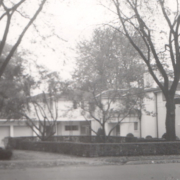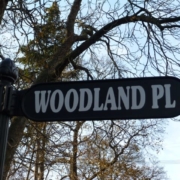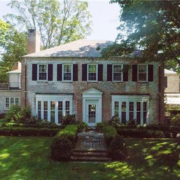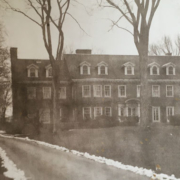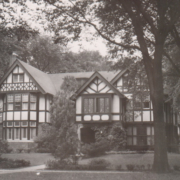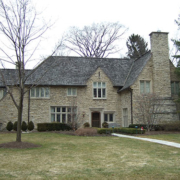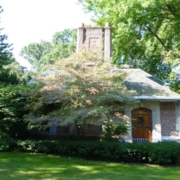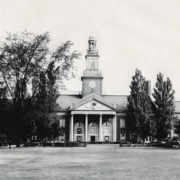Historical Architecture of Grosse Pointe – Homes with International Style
International Style is an important architectural movement that began to gain popularity during the 1920’s and 1930’s. The term “International Style” first came into play via a 1932 exhibition organized by American architects Henry-Russell Hitchcock and Philip Johnson – ‘Modern Architecture: International Exhibition’, which declared and labeled the architecture of the early 20th century as the “International Style“. Source: Wikipedia
The International Style began to gather pace in the US at the beginning of the 1930’s. Many US cities on the East Coast began to construct skyscrapers – lead by pioneering architects in this moment such as Philip Johnson – whilst ground breaking residential projects were being created by Frank Lloyd Wright and Eliel Saarinen to name but a few.
Based on research from Wikipedia the most common characteristics of International Style buildings are said to be: rectilinear forms; light, open interior spaces, and taut plane surfaces that have been completely stripped of applied ornamentation and decoration.
Here in Grosse Pointe, during the 1930’s, several international style projects had begun to appear in the community including: 766 Westchester, 888 Pemberton (by Alden Dow), and 641 Oxford, 705 Pemberton (by Lyle Zisler).
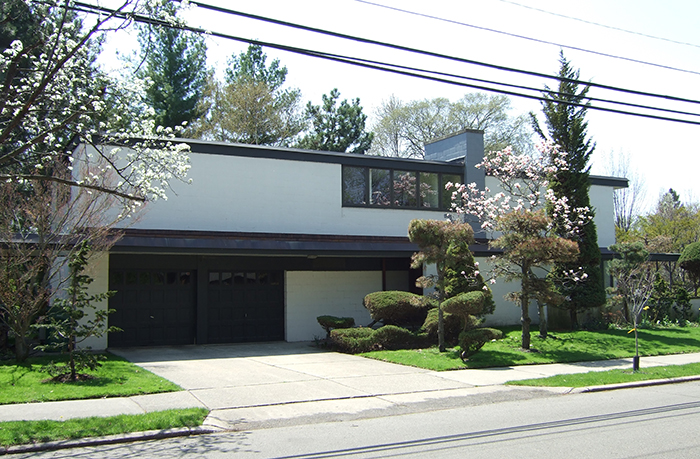
Louis Rossetti, in conjunction with Raymond Giffels & Victor Vallet, created several international style homes in the community during this era, including – 10 Provencal, 780 Grand Marais, 1119 Harvard, and his own home located at 1145 Balfour (in 1945).
10 Provencal is located at the foot of the hill of this prestigious road in Grosse Pointe Farms. It was built in 1936 for the Swift Family as their summer residence. Its porthole windows and balcony railing give this home a ship-like appearance – not unusual for homes created in this style during the 1930’s.
Constructed from concrete, and overlooking the lake this 4,953 sq ft home (which has been significantly expanded) now features 6 bedrooms and a large 18’ x 25’ sq ft living room – as depicted in the floor plans below. At the time of construction we believe the home included a Florida Room, maids quarters, butlers pantry along with Art Deco fixtures throughout out. Windows are a prominent feature to this home, thus ensuring many of the rooms are filled with an abundance of natural light.

780 Grand Marais, a 2,486 sq ft home, was also built in 1936.

780 Grand Marais
1119 Harvard was built in 1938 and is far more angular in its appearance than the rounded curves of Rosetti and Giffels previous designs.

1119 Harvard – Courtesy of Realtor.com
Rossetti continued with the angular theme in the design of his own home – 1145 Balfour – built in 1945. At the time of construction this 2,878 Sq ft, 5-level house contained many innovative elements for its time, including a central ventilation system, load bearing cinder block walls and a multi level, open floor plan free of hallways. The design also included a spacious living and dining area, a large family room (25 x 25 sq ft) with a skylight, a kitchen with brushed chrome cabinetry, along with four bedrooms.

1145 Balfour
The Architects
Louis Rossetti, was born in Paris in 1895. He served in World War 1 as a captain, receiving the silver medal of valor for his service. In 1924, after graduating from Rome University, he won a scholarship to travel to America. He soon established himself as an architect in Detroit and in 1929 he joined the firm of Raymond Giffels & Victor Vallet as a partner – the firm was renamed as Giffels & Vallet Inc., L. Rosetti, Associated Engineers & Architects

Louise Rosetti

Raymond Giffels
By the 1950’s Giffels & Rosetti had become one of the largest firms in the country, had over 950 employees, and produced work around the world. The firm was responsible for the design of the original Cobo Hall in Detroit, the Jeffersonian Apartments, and the Main Terminal Building at the Wayne County Metro Airport (1958).
In 1963 Raymond Giffels and Louis Rossetti went their separate ways. Both established their own firms that still exist today in Detroit and Southfield respectively.
Grosse Pointe has an abundance of differing architectural styles, and in amongst them is a handful of homes with International Style…we wish there could have been more.
*Photos courtesy of the Higbie Maxon Agney archives unless stated.
Written by Katie Doelle
Copyright © 2017 Katie Doelle

